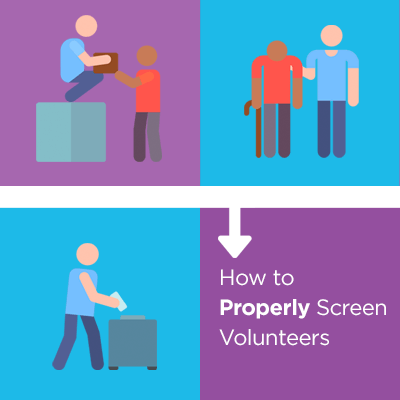From fundraising to administrative tasks, volunteers are the backbone of many nonprofit organizations, ingraining themselves into the day-to-day operations of some of the world’s most prominent charities and causes. But a sizable number of nonprofits — 43%, to be exact — still aren’t screening every single volunteer who helps out. Their organization’s finances, reputation and safety are all at risk. Even if your organization doesn’t cater specifically to vulnerable populations like children, the elderly or the disabled, you still need to do your due diligence to protect everyone around you. Here are a few ways to make sure that only the best people gain access to your organization.
Be picky, and don’t apologize for it.
Although you may be offering a volunteer role, it should be made clear from the initial posting that not everyone will be accepted. Execute a traditional recruitment process that includes background checks, and be 100% open and transparent with candidates about how carefully your organization selects volunteers. That way, anyone who chooses to apply does so with full knowledge that they will be thoroughly screened.
Have candidates complete an application.
In addition to gathering basic identifying information including the candidate’s name, address and relevant experience, your application should ask for references and include a statement that gives your organization permission to execute a formal background check. In addition to the initial volunteer posting, the application is another opportunity to drive home your organization’s commitment to engaging only quality people.
Conduct interviews.
This is a pretty important step in the process. Interviews are your organization’s first opportunity to hear from the candidate firsthand about their skills and experience, and gauge whether or not they’ll be a good fit for your organization. Also, it’s a chance for you to set forth your own expectations for volunteers. Make sure to pay careful attention to any behavioral red flags, such as attitudes that could prove detrimental to vulnerable populations in your community.
Check their references.
It’s always good to get a second opinion on the candidate’s fitness for the available role in your organization. When contacting provided references, be sure to clearly describe the position the individual is interested in, and ask for specific examples of how the candidate has proven they can meet the demands of the role. And, don’t assume that just because the candidate provided the reference, the individual will speak highly of them. People often assume that organizations won’t actually contact references, and will put any contact down — regardless of how good or bad the interaction was. So prove them wrong and contact all provided references.
Perform a background check.
After you’ve interviewed and checked references yourself, and everything seems to be in order, it’s time to work with a background screening provider to check their criminal record. There is no single database that contains every criminal record, so make sure to work with a provider who checks national, state and country records so that you don’t miss anything.
Does your organization need help screening volunteers? Let’s talk!
